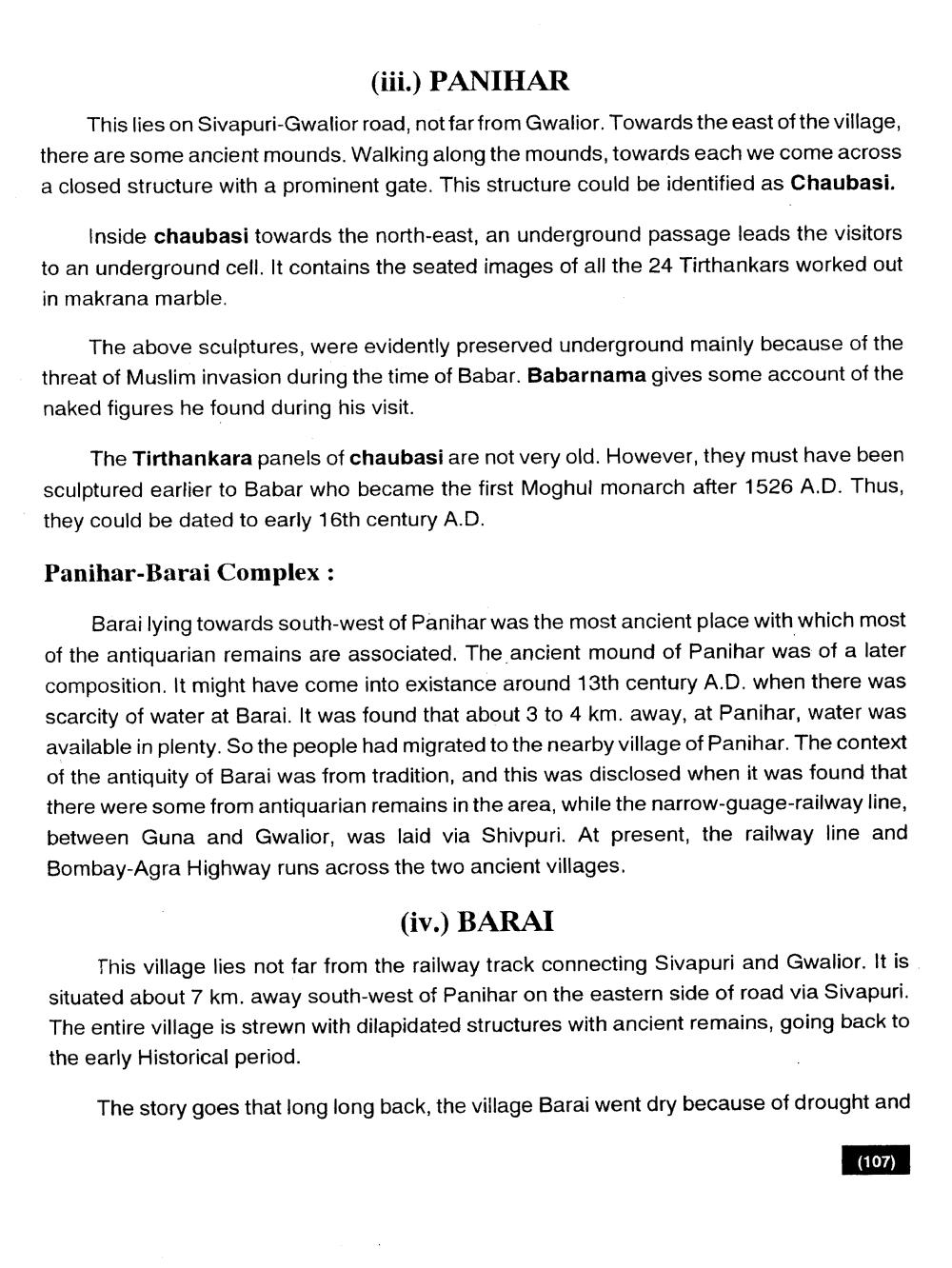________________
(iii.) PANIHAR This lies on Sivapuri-Gwalior road, not far from Gwalior. Towards the east of the village, there are some ancient mounds. Walking along the mounds, towards each we come across a closed structure with a prominent gate. This structure could be identified as Chaubasi.
Inside chaubasi towards the north-east, an underground passage leads the visitors to an underground cell. It contains the seated images of all the 24 Tirthankars worked out in makrana marble.
The above sculptures, were evidently preserved underground mainly because of the threat of Muslim invasion during the time of Babar. Babarnama gives some account of the naked figures he found during his visit.
The Tirthankara panels of chaubasi are not very old. However, they must have been sculptured earlier to Babar who became the first Moghul monarch after 1526 A.D. Thus, they could be dated to early 16th century A.D.
Panihar-Barai Complex :
Barai lying towards south-west of Panihar was the most ancient place with which most of the antiquarian remains are associated. The ancient mound of Panihar was of a later composition. It might have come into existance around 13th century A.D. when there was scarcity of water at Barai. It was found that about 3 to 4 km. away, at Panihar, water was available in plenty. So the people had migrated to the nearby village of Panihar. The context of the antiquity of Barai was from tradition, and this was disclosed when it was found that there were some from antiquarian remains in the area, while the narrow-guage-railway line, between Guna and Gwalior, was laid via Shivpuri. At present, the railway line and Bombay-Agra Highway runs across the two ancient villages.
(iv.) BARAI
This village lies not far from the railway track connecting Sivapuri and Gwalior. It is situated about 7 km. away south-west of Panihar on the eastern side of road via Sivapuri. The entire village is strewn with dilapidated structures with ancient remains, going back to the early Historical period.
The story goes that long long back, the village Barai went dry because of drought and
(107)




